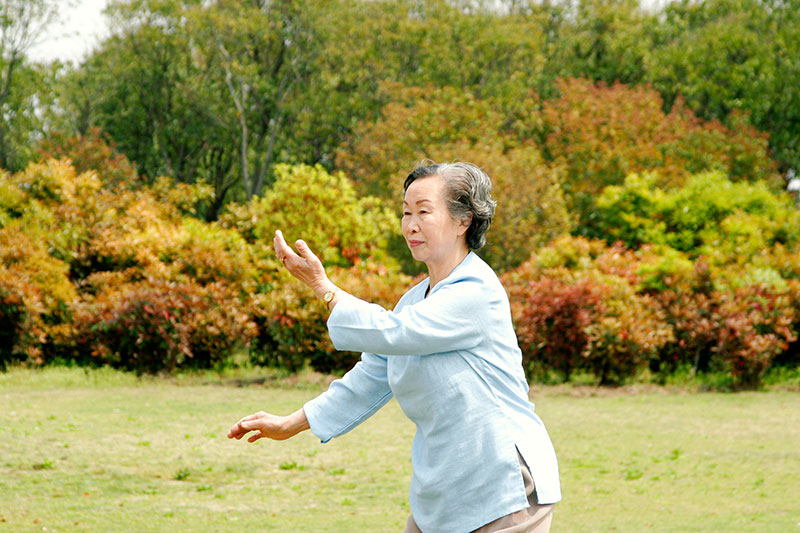Physician Alois Alzheimer was examining Auguste Deter on a hospital bed.
Alzheimer: “What’s your name?”
Auguste: “Auguste.”
Alzheimer: “Last name.”
Auguste: “Auguste.”
Alzheimer: “What’s your husband’s name?”
Auguste: “Auguste, I think.”While Deter was eating cauliflower and pork for lunch:
Alzheimer: “What are you eating?”
Auguste: “Spinach.”
Alzheimer: “What are you doing?”
Auguste: “Potatoes.”
Alzheimer jotted down the conversation word for word and at that time, in 1901, there was no term to describe Deter’s condition. After 5 year, Alzheimer autopsied her brain and examined it under a microscope. He saw thick fibers which is called tangles that wrapped around the cell’s interiors crushing their contents. There were also clumps of smooth plaques that filled the space around the cells and distorted their shape.
Alzheimer referred to the condition as “a serious disease of the cerebral cortex.” After that, doctors started to diagnose the disease in patients with similar symptoms. Eventually, it was named after the physician who first described it and is now known as Alzheimer’s disease.
In the United States today, about 5.3 million people have Alzheimer’s and that figure is expected to nearly triple by 2050.
Alzheimer’s disease is a progressive, degenerative disorder in which the brain’s cells become damaged, causing problems with memory, thinking and speaking skills, as well as changes in behaviors. Plaques and tangles in the brain are the hallmark features. For the majority of patients, doctors diagnose Alzheimer’s based on symptoms, once dementia has already started to set in.
An impressive body of research shows that lifestyle habits can dramatically reduce your risk for developing the disease. For several years, Finnish and Swedish researchers followed more than a thousand people age 60 to 77 at high risk for developing Alzheimer’s. Those who include nutritious eating, regular exercise and intellectual pursuits performed at least 25 percent better on tests of memory, thinking and problem solving than did other people who kept the same routine. This was enough to delay a dementia diagnosis by two years and reduce the prevalence 25 percent. If the interventions started earlier in life then the findings should have been more dramatic.
Habits of People Who Prevent Dementia
The evidence is clear: People who regularly do the following have a lower risk of developing cognitive decline.
1. They Get Physical
When you get physical, you don’t need a prescription. It is a medicine that can protect brain cells and encourage the birth of the new ones. Studies proved that physical activity ranks as the most potent Alzheimer’s protection. People that exercise at least three times a week for a minimum of 15 to 30 minutes a session were less likely to develop Alzheimer’s disease even if it ran in the family, according to research done by the University of Illinois at Urbana-Champaign.
Try It: Walk at least a mile every day. A simple walk delivers powerful brain benefits. A study conducted by the University of Pittsburgh that those who walked just six to nine miles a week had a greater volume of grey matters in the brain when tested nine years later compared to those who walked less.
Try It: Dance the night away. Albert Einstein in the College of Medicine in New York City found that dance can reduce risk for dementia more than any other type of physical activity because when you dance, you are being social and learn new steps which improve intellectual fitness.
2. They Eat Antioxidant-Rich, Anti-Inflammatory Foods
The best dietary pattern, food or supplement leads to optimum brain healthy. The diet that is popular around the world that protects the brain and what they have in common is rich in plants, low in highly processed foods.
A diet that was developed at Rush University Medical Center in Chicago lowered the risk of Alzheimer’s disease as much as 53 percent over nearly five years. It showcases ten brain healthy foods (leafy greens, vegetables, nuts, berries, beans, whole grains, fish, poultry, olive oil and wine) while limiting the consumption of red meat, butter, margarine, cheese, sweets, desserts, fried food and fast food.
Try It: Start meals with a helping of veggies. In a study of 3718 people (ages 65 and older) those who consumed more than four daily servings had a 40 percent slower rate of cognitive decline than people who had less than one daily serving.
Try It: Spice things up. Herbs and spices add flavour to food, allowing you to cut back on butter, oil and salt. Curry and turmeric contain the antioxidant curcumin, which several studies show could help reduce the risk of Alzheimer’s disease (as well as that of cancer, arthritis and depression).
3. They Make Time For Friends
To avoid loneliness is keeping the brain young according to research from the Rush Alzheimer’s disease Center in Chicago. Older adults who frequently spent time with others (being part of a book club or a card game, having dinner dates with their friends, visiting family) had a 70 percent lower rate of cognitive decline over 12 years than did seniors with fewer interactions.
Try It: Make new friends-at any age. The University of Chicago researchers found out that meeting new people and making connections is harder than the actual meeting. The participants were seated next to strangers and had a conversation during the commute then they felt better talking with someone than being alone.
Try It: Throw dinner parties. When you decide for the whole event and how it will go then it forces your brain to make complex social decision. Making sure that everything is ready when the guests arrive requires strategic planning and a high-level skill.
4. They Exercise Their Brains
The brain gets flabby when not challenged like helping kids with their homework, say, or assembling furniture). In one study, older adults who frequently do something stimulating as a leisure activity were less like to develop dementia over 21 years compared to those who would not.
One of the reasons why it is said that brain workouts are so powerful: taxi drivers in London. In London, taxi drivers need to pass the driving tests by memorizing the locations and names of 25,000 streets and 20,000 landmarks with over 320 possible routes. There were two major studies that found out that London taxi drivers have an enlarged part of the hippocampus – a brain region that helps process memory compared with non-taxi drivers and even bigger than bus drivers, who just memorize few routes.
Try It: Read to learn. Reading can fill your mind with knowledge. Cognitive reserve is being fuelled according to brain scientists that can ward off dementia. As mild cognitive impairment begins, the theory goes; cognitive reserve allows you to lose more memories before the loss affects your daily life.
Try It: Learn how to draw, paint or sculpt. Those who took up painting, drawing or sculpting were 73 percent less to develop mild cognitive over a period of four years than were people who does not engage in artistic activities which was found in a recent Mayo Clinic study. These activities require you to focus your attention.









Leave A Comment